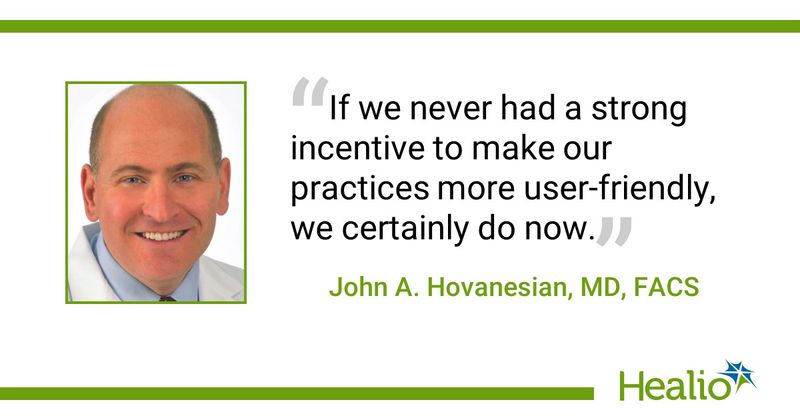BLOG: Will Walgreens upend eye care?
There’s no question that retail chains like Walgreens and CVS are investing in primary health care services, acquiring large providers like Signify Health for billions of dollars to quickly enlarge their footprint.
Considering that the market size for vision care in the U.S. is $38 billion, there’s no question they are coming in some manner for eye care as well.

How do consumers feel about a shift to retail health care? A study by Wolters Kluwer released in May revealed that more than half of those identified as Gen Z or millennials — our future ophthalmology target audience — have already sought health care from a local pharmacy instead of a traditional doctor’s office, compared with about 40% of Gen X and 35% of baby boomers.
Why are consumers attracted to retail medical care? Cost is cited as one driver, but convenience ranks as the most appealing feature of retail chains for the youngest consumers. And how do traditional medical practices compare with retail chains on convenience? Not even close. Just getting an appointment with a medical practice usually requires a call with a wait on hold, followed by a wait of days to weeks for a routine appointment. The appointment itself requires taking half a day off from work.
Contrast that with an appointment with a CVS MinuteClinic. I recently received my shingles vaccine from one of these facilities when I found out that it was the only location where my health insurance would cover the cost. Appointment scheduling and insurance verification online were extremely convenient, and there was zero wait when I showed up at the appointed time to get my injection by the nurse practitioner. I was in and out in less than 30 minutes with no out-of-pocket cost.
To be sure, eye care is a different animal. Retail chains like Vision Source, Luxottica, Walmart and others already command a multibillion dollar retail optical business that would compete with Walgreens and CVS. Also, ophthalmologists who provide more advanced medical care enjoy greater trust for vision-threatening disorders. But think about more routine ophthalmology patients who need regular care for common conditions like dry eye and glaucoma, which together make up more than half the clinic practice of typical general ophthalmologists. For less picky consumers, a personable non-physician provider guided by AI-driven, evidence-based medical protocols could probably earn their trust. And long-term outcomes studies of many conditions will most likely show equivalent outcomes comparing a remotely supervised retail chain with digital (non-mydriatic) diagnostics to an in-person ophthalmologist in a traditional setting. Whether you agree or not, most patients will call this a win. Clearly, it’s a win for the retail chain, which creates another income stream from the same facility. And in the end, it may be a win for ophthalmologists, who are already in short supply and whose skills in surgery will remain in demand for the foreseeable future, even if robots of the future take over some steps of surgery.
What can eye care providers do today to protect their practices from this potential threat? First, realize there is no substitute for the trust of the many patients you have served with your compassion and expertise, but also consider any means of creating convenience for your patients. Could you change your hours to be easier for working people? Does someone answer the phone during most people’s lunch hour? Is there an online scheduling platform you could employ? How long do patients typically wait to be seen? If we never had a strong incentive to make our practices more user-friendly, we certainly do now.
References:
- CVS Health completes acquisition of Signify Health. https://www.cvshealth.com/news/company-news/cvs-health-completes-acquisition-of-signify-health.html. Published March 29, 2023. Accessed July 3, 2023.
- Survey executive summary. https://assets.contenthub.wolterskluwer.com/api/public/content/29549edb13f343a5beba02874f7d472a?v=685b6a9c. Accessed June 29, 2023.
- Total value of the vision care market in the United States from 2011 to 2021. https://www.statista.com/statistics/302925/value-of-the-us-vision-market/#:~:text=In%202021%2C%20the%20U.S.%20vision,over%20the%20displayed%20time%20period. Accessed June 29, 2023.
Collapse
